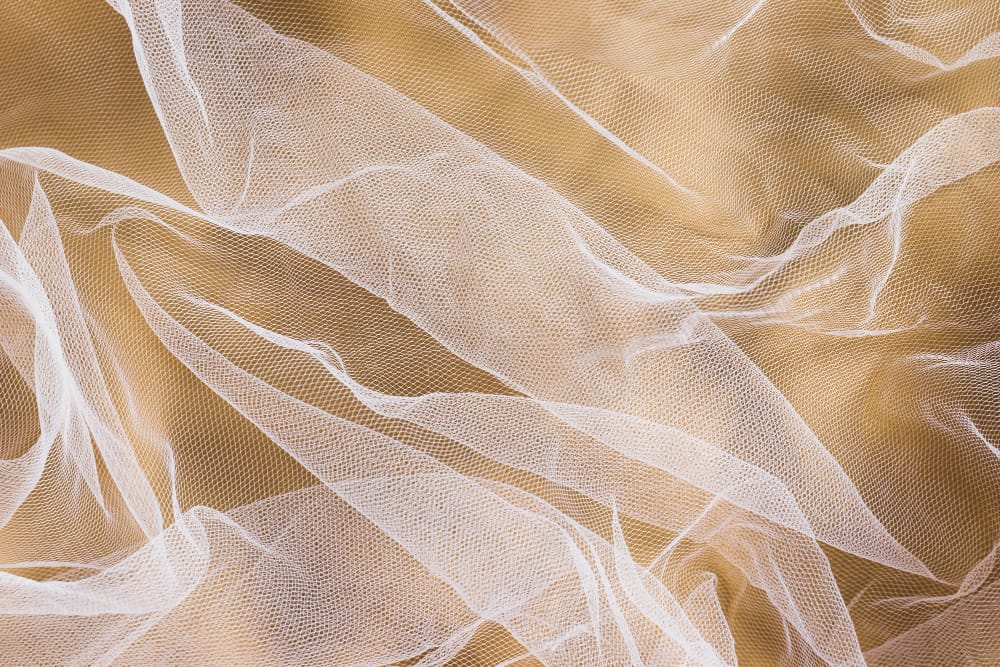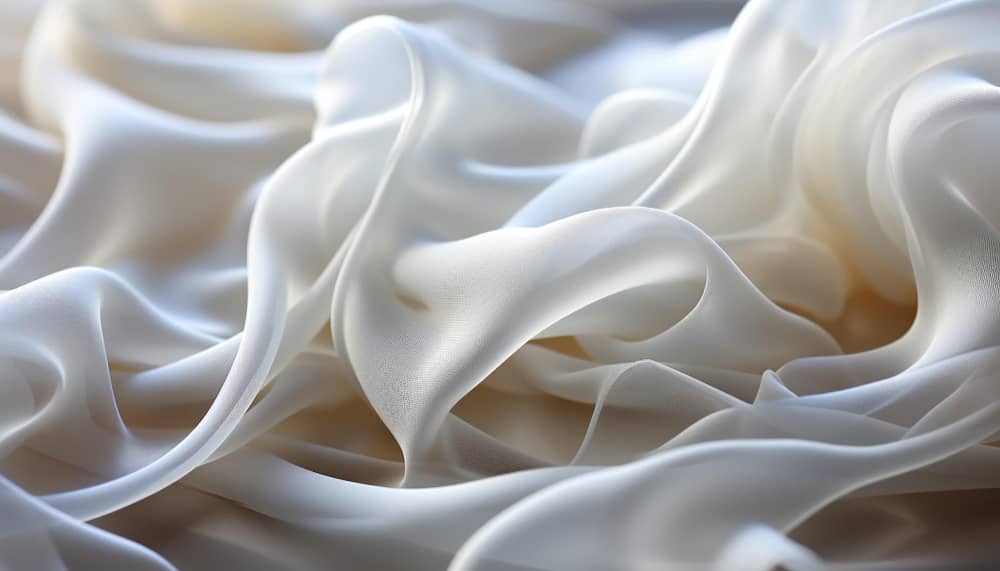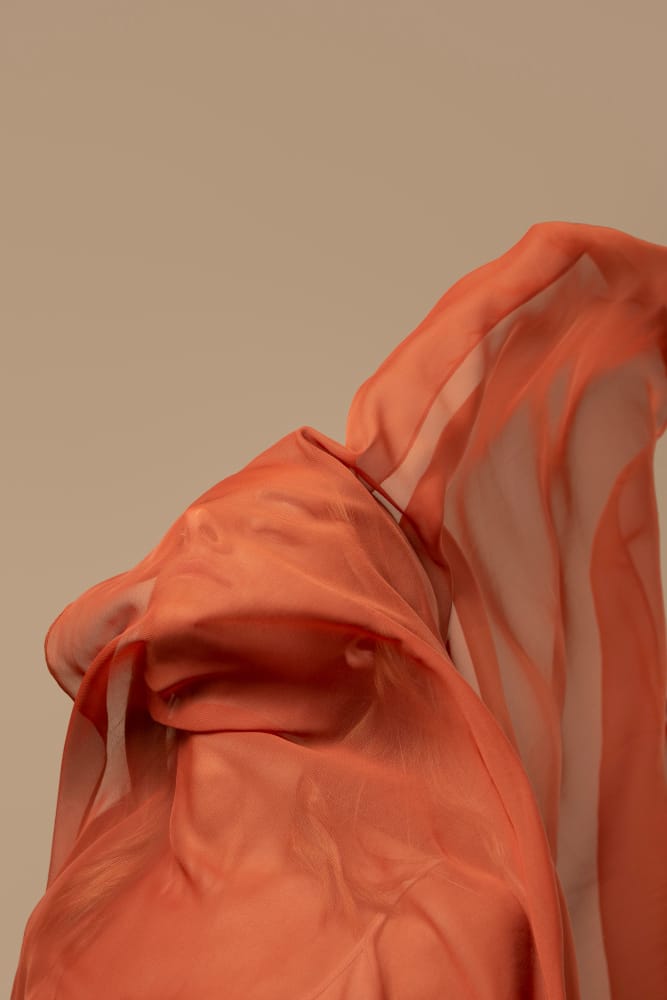Home » Organza
The Lightweight Delight: Understanding Organza Fabric
Organza fabric is a sheer and lightweight fabric that is synonymous with elegance and luxury. Made from silk, nylon, or polyester, organza is a versatile material that is used in a variety of applications, from fashion to home décor. In this blog post, we will delve into the origins and evolution of organza fabric, the art of making organza, the unique characteristics of the fabric, its versatile uses in fashion and décor, tips for sewing and handling organza fabric, and how to care for this delicate material.


The Origins and Evolution of Organza Fabric
The journey of organza fabric through the annals of history is as intriguing as the material itself. Tracing its roots back to ancient China, organza was initially crafted from the finest silk, making it a luxurious commodity coveted by the elite. This opulent fabric was emblematic of sophistication and was predominantly utilised in the creation of attire for the aristocracy, as well as in the embellishment of their lavish dwellings. As the allure of organza began to traverse borders, it found a new home in Europe, particularly during the Renaissance period, when it became a staple in the fashion and décor of European courts.
The evolution of organza saw a significant shift with the advent of synthetic fibres in the 20th century. The introduction of nylon and polyester as alternative materials to silk made organza more accessible and affordable, thus broadening its appeal and applications. This transition not only democratised the fabric, making it available to a wider audience but also introduced a new versatility in its use, from everyday fashion to intricate home decorations.
The enduring popularity of organza can be attributed to its timeless elegance and the continuous innovation in its production techniques. Today, organza stands as a testament to the fusion of traditional craftsmanship and modern technology, offering a blend of durability, beauty, and sheer luxury that continues to captivate and inspire designers and consumers alike.
The Art of Making Organza: Materials and Methods
The meticulous craftsmanship behind organza fabrication is a testament to the intricate artistry and technical precision required in textile production. The foundation of creating this ethereal fabric lies in the selection of high-quality raw materials. Silk, the most traditional of these, lends organza its unrivalled sheen and softness, whilst synthetic alternatives like nylon and polyester contribute to its durability and accessibility, broadening its usage across various domains.
The weaving process is pivotal in achieving organza’s characteristic diaphanous texture. Employing a plain weave, one of the most fundamental yet versatile of weaving techniques, the threads are interlaced to form a thin and tightly woven fabric. This meticulous method ensures the fabric’s celebrated crispness and its ability to maintain form, providing a canvas that juxtaposes fragility with strength.
Distinct from heavier textiles, organza demands a higher thread count to achieve its signature lightweight feel without compromising on the fabric’s integrity. The looms used are often configured to accommodate the fabric’s delicacy, ensuring that the warp and weft threads interlace with precision, avoiding any damage to the fine threads.
This production process, whilst rooted in age-old traditions, has evolved with technological advancements. Modern manufacturing techniques have allowed for enhanced quality control, ensuring each metre of organza meets stringent standards of beauty and durability. Innovations in dyeing and finishing processes have further expanded the fabric’s aesthetic appeal, allowing for a broader palette of colours and textures.
The artistry behind organza’s creation thus embodies a perfect harmony between traditional skill and modern innovation, resulting in a fabric that continues to enchant and inspire across generations.
The Unique Characteristics of Organza Fabric
Organza fabric stands out in the world of textiles due to its distinctive properties that celebrate both the ethereal and the structural. Its sheer, lightweight nature is perhaps the most celebrated aspect, allowing for the creation of voluminous yet airy designs that seem to float with grace. The crispness of organza is another hallmark, imparting a smooth finish that exudes sophistication and elegance. Unlike many other fabrics, organza has a unique ability to retain its shape, thanks to its tightly woven structure. This makes it an ideal choice for garments and décor pieces that require a degree of formality and poise.
The adaptability of organza in terms of colour and design further elevates its status among designers and enthusiasts alike. Its surface, receptive to a myriad of dyes, unveils a spectrum of colours that can range from the most delicate pastels to the richest of hues. This versatility ensures that organza can be seamlessly integrated into various stylistic themes, be it for fashion runways or interior spaces. Moreover, its compatibility with embroidery and embellishments allows for endless creative expression, enabling designers to weave intricate patterns and textures into their creations.
These unique characteristics of organza fabric collectively contribute to its prestige as a material that transcends trends, offering a timeless appeal that blends seamlessly with both contemporary and traditional designs. Its blend of visual allure and functional robustness positions organza as a cherished fabric in the realms of high fashion and opulent décor.

Versatile Uses of Organza in Fashion and Decor
Organza fabric has carved its niche within both the realms of high fashion and luxurious home décor. In the fashion industry, its application ranges from creating ethereal wedding dresses to crafting delicate evening wear that showcases the fabric’s ability to add volume without weight. Designers also employ organza in the layering of garments, utilising its sheer quality to produce depth and texture while maintaining a lightweight silhouette. Beyond clothing, organza finds its way into accessories such as scarves, wraps, and even intricate floral arrangements that adorn hats and bags, offering a touch of sophistication. In home décor, organza’s appeal lies in its ability to soften and refine spaces with a light, airy touch. It is commonly used in the making of sheer curtains, which allow natural light to filter through gently, creating an inviting and serene atmosphere. Table runners, chair sashes, and decorative overlays made from organza add an element of elegance to home settings and special events alike. Additionally, organza can be incorporated into festive decorations, such as wreaths and garlands, to achieve a whimsical, graceful aesthetic. Its versatility in both fashion and décor underscores the enduring allure of organza fabric, enabling endless creative possibilities.
Tips for Sewing and Handling Organza Fabric
When embarking on projects involving organza fabric, adopting particular techniques can safeguard its integrity and enhance the end result. Firstly, selecting the correct needle and thread is paramount; a fine, sharp needle and equally fine thread will minimise the risk of damaging the fabric’s weave. Tension settings on your sewing machine should be adjusted to a lower level to prevent the organza from gathering or puckering under too much pressure.
Due to its transparency and tendency to fray, overcasting or French seams are recommended to achieve a professional and durable finish. These methods not only secure the fabric edges but also contribute to the garment’s overall elegance. To maintain the material’s pristine condition, interfacing with organza requires a gentle hand; consider using a lightweight fusible interfacing that won’t weigh down or stiffen the organza excessively.
Ironing organza calls for caution – a pressing cloth should always be used to protect the fabric from direct heat, and the iron set to a low temperature to avoid melting, particularly when working with synthetic organza. Pinning presents another common challenge; fine, sharp pins should be carefully placed within seam allowances to avoid leaving visible holes in the fabric.
Lastly, when cutting organza, a steady hand and sharp scissors are crucial for clean, precise cuts. Securing the fabric with pattern weights instead of pins can prevent unnecessary punctures and ensure smooth cutting lines. Implementing these practices will ensure that your work with organza is as flawless and rewarding as the fabric itself.

Caring for Organza: Do’s and Don’ts
Maintaining organza fabric demands attentiveness to its unique needs to ensure its longevity and preserve its luxurious feel. It is advisable to gently hand wash organza using lukewarm water and a gentle soap, avoiding any harsh chemicals that could degrade the fabric. After washing, it’s best to air dry the fabric by laying it flat on a clean, dry towel, rather than wringing it out, which could damage its structure. Ironing should be approached with caution; use a low heat setting and always place a protective cloth between the iron and the organza to shield it from potential heat damage.
When storing organza garments or textiles, opt for a cool, dry environment to prevent any dampness from affecting the fabric. It’s also prudent to avoid folding organza in a manner that could cause creases or wrinkles; instead, roll the fabric or hang it to keep it in optimal condition. Following these guidelines will help in maintaining the elegance and integrity of organza items, ensuring they remain a cherished part of your wardrobe or home décor for years to come.